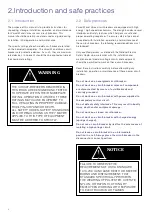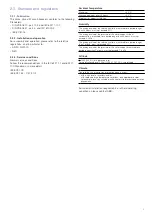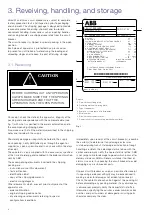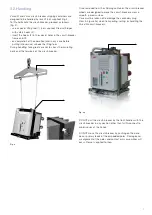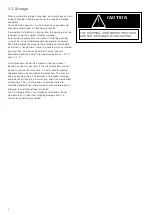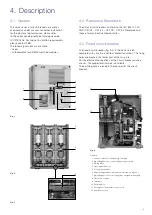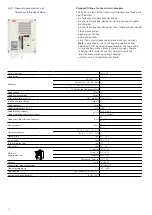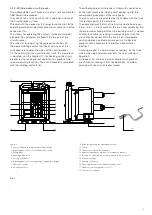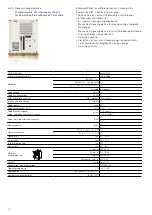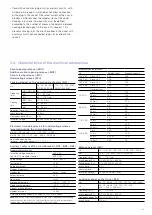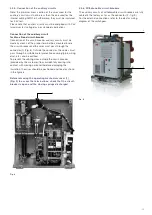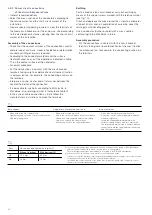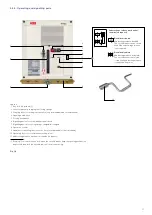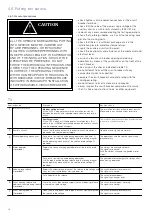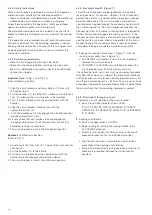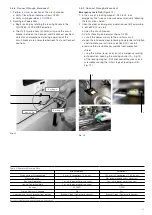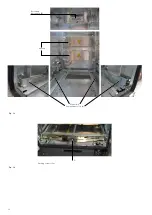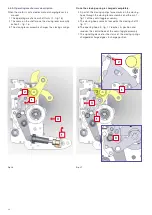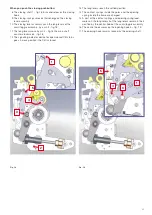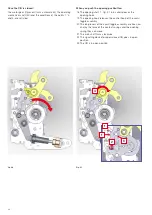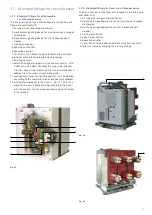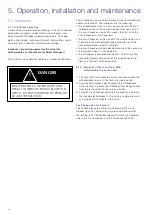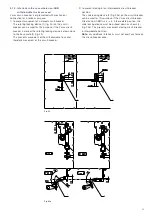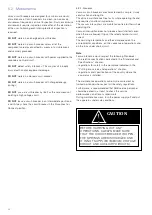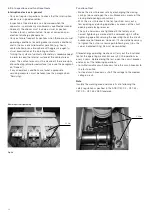
18
4.6. Putting into service
4.6.1. general procedures
ALL THE OPERATIONS REGARDING PuTTING
INTO SERVICE MuST bE CARRIED OuT
by Abb PERSONNEL OR by SuITAbLy
quALIFIED CuSTOMER PERSONNEL wITH
IN DEPTH kNOwLEDGE OF THE APPARATuS
AND OF THE INSTALLATION. SHOuLD THE
OPERATIONS bE PREVENTED, DO NOT
FORCE THE MECHANICAL INTERLOCkS AND
CHECk THAT THE OPERATING SEquENCE
IS CORRECT. THE OPERATING FORCES
wHICH CAN bE APPLIED FOR RACkING-IN
wITHDRAwAbLE CIRCuIT-bREAkERS ARE
INDICATED IN PARAGRAPH “INSTALLATION
OF wITHDRAwAbLE CIRCuIT-bREAkERS”.
CAUTION
– check tightness of the power connections at the circuit-
breaker terminals;
– check that the value of the power supply voltage of the
auxiliary circuits is within limits stated by IEEE C37.06;
– remount any covers removed during the testing operations;
– check that no foreign bodies, such as bits of packing, have
got into the moving parts;
– check that there is a sufficient exchange of air in the
installation place to avoid over temperatures;
– supply the auxiliary circuits with power;
– check the functionality and efficiency of the mechanical and
electrical locks;
– carry out a few circuit-breaker opening and closing
operations by means of the pushbuttons on the front of the
circuit-breaker;
– also carry out the checks indicated in table T3;
– do not attempt to insert the circuit-breaker into any
compartment prior to inspection;
– compare the circuit-breaker name plate rating with the
switchgear rating;
– do not attempt to insert a closed circuit-breaker;
– always inspect the circuit-breaker compartment to insure
that it is free of obstructions, tools, or other equipment.
T3
item inspected
Procedure
Positive check
1
Insulation resistance.
Medium voltage circuit
with a 2500 V megger, measure the insulation resistance
between the phases and the exposed conductive part of the
circuit.
The insulation resistance should be at least 50
Mohm and in any case constant over time.
auxiliary circuits
with a 500 V megger (if the apparatus installed allows this),
measure the insulation resistance between the auxiliary circuits
and the exposed conductive part.
The insulation resistance should be a few Mohm and
in any case constant over time.
2
Auxiliary circuits.
Check that the connections to the control circuit are correct:
proceed at the relative power supply.
Operations and signals are normal.
3
Manual operating mechanism.
Carry out a few closing and opening operations (see cap. 6).
N.b. Supply the undervoltage release and the locking magnet
on the operating mechanism at the relative rated voltage (if
provided).
The operations and the relative signals take
place normally.
4
Motor operator
(if provided).
Supply the spring charging geared motor at the relative rated
voltage.
The springs are charged normally.
The signals are normal.
with the springs charged, the geared motor
stops.
Carry out a few closing and opening operations.
N.b. Supply the undervoltage release and the locking magnet
on the operating mechanism at the relative rated voltage (if
provided).
The geared motor recharges the springs after
each closing operation.
5
undervoltage release
(if provided).
Supply the undervoltage release at the relative rated voltage and
carry out the circuit-breaker closing operation.
The circuit-breaker closes normally.
The signals are normal.
Cut off power to the release.
The circuit-breaker opens.
The signalling changes over.
6
Shunt opening release and
additional shunt opening release
(if provided).
Close the circuit-breaker and supply the shunt opening release
at the relative rated voltage.
The circuit-breaker opens normally.
The signals are normal.
7
Shunt closing release
(if provided).
Open the circuit-breaker and supply the shunt closing release at
the relative rated voltage.
The circuit-breaker closes normally.
The signals are normal.

